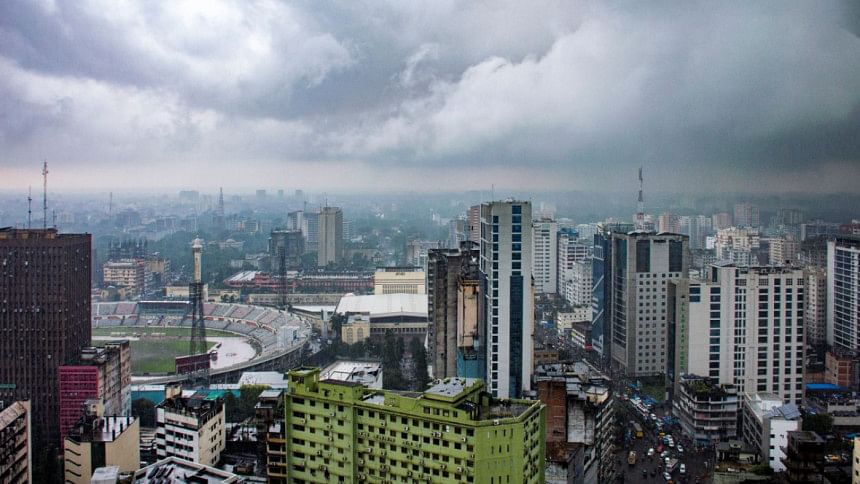Is LDC graduation a panacea?

Bangladesh has successfully met all three criteria for LDC graduation in the first review in March 2018. It is expected that Bangladesh will be able to meet the graduation criteria in the second review in 2021 and will finally graduate from the LDC status in 2024. Benefits of graduation from the LDC status are cited to include an improved country-image and higher rating for investment by international rating agencies which may attract larger foreign direct investment.
However, there are a number of risk factors for Bangladesh associated with its graduation from the LDC status. Simulation results from the global dynamic general equilibrium model suggest that the loss of preferences in the markets of European Union, Canada, Australia, Japan, India and China in 2027 (the year which will mark the end of preferences for Bangladesh if the country can officially graduate from the LDC status in 2024) might lead to an annual reduction in total exports of Bangladesh by 11 percent which would be equivalent to around USD 6 billion given the current projection of growth in exports. Also, many of the exemptions of WTO provisions, including the cut in tariff and subsidies and adherence to intellectual property rights (especially for pharmaceuticals sector), which are currently enjoyed by Bangladesh as an LDC, will no longer be available after 2027.
Furthermore, as Bangladesh has already graduated from the World Bank's "low-income" category to "lower-middle income" category, the scope for loans at lower interest rates would be limited. It is important to mention here that many of the aforementioned prospective benefits are not "automatic" as the country has to work quite a lot to materialise those benefits. In contrast, almost all of the possible losses would be "automatic" as soon as the country graduates from the LDC status. Therefore, the country has to prepare itself over the next nine years to counter these losses.
In order to have a better understanding of Bangladesh's progress in the per capita Gross National Income (GNI) in a cross-country context over the period between 1980 and 2016, we have compared the experiences of 140 countries (excluding the high-income countries). It appears that Bangladesh was able to increase its per capita GNI from USD 206 in 1980 to USD 1,433 in 2016. There were some countries, like Somalia, Cambodia, Nepal, Chad and Myanmar, which had per capita GNIs lower than that of Bangladesh both in 1980 and 2016. However, most of the Sub-Saharan African countries had per capita GNIs higher in 1980 but lower in 2016 than that of Bangladesh. This suggests that Bangladesh outperformed those Sub-Saharan African countries in terms of growth in per capita GNI over the last three and half decades. In contrast, interestingly, Vietnam and Lao PDR had per capita GNIs lower in 1980 but higher in 2016 than that of Bangladesh. Both Vietnam and Lao PDR outperformed Bangladesh during the period under consideration. In 1980, per capita GNIs of Vietnam and Lao PDR were only USD 43 and USD 102 respectively (much lower than that of Bangladesh) but increased to USD 2,059 and USD 2,237 respectively in 2016. There are some countries which had per capita GNIs higher than that of Bangladesh both in 1980 and 2016. But Bangladesh has been able to reduce the gaps in per capita GNIs by 2016 with some of these countries (mostly the slow-growing upper-middle income countries), but the gaps widened with some other countries (high growth performing countries like China, Singapore, Thailand, Botswana and Poland), compared to the gaps in 1980.
This analysis evokes that though Bangladesh's experiences in growth in per capita GNI over the past three and a half decades were much better than those of a number of countries, especially the Sub-Saharan African countries, Bangladesh was outperformed by the leading growing economies of Southeast Asia and Africa. Given Bangladesh's poor record of attracting foreign direct investment, the high concentration of exports, weak competitiveness, and poor physical and social infrastructures, the country has to learn how these high-performing countries have been able to attract the large volume of foreign direct investment, noticeably diversify their export baskets, enhance competitiveness, and significantly improve physical and social infrastructures. Also, experience of most of these countries suggests that improvement in the quality of economic and political institutions and quality service delivery by the public institutions are crucial in sustaining the development process.
LDC graduation is not a panacea. There are genuine concerns that though the business-as-usual process of economic and social development might lead Bangladesh to graduate from the LDC status by 2024, such business-as-usual process will certainly not lead to achieving the much larger and important development goals. Becoming a non-LDC and graduating from the current status of "lower-middle income" country to an "upper-middle income" country is not the same, and therefore, avoiding the "middle-income trap" would be a forthcoming challenge. On top of all these, attaining the stiff targets of SDGs by 2030 would be a gigantic task for Bangladesh. The changing global and regional scenarios also appear to be much more challenging. All these suggest that Bangladesh has to make some extraordinary efforts in its economic and social development process in the days to come.
Dr Selim Raihan is Professor, Department of Economics, University of Dhaka, Bangladesh, and Executive Director, South Asian Network on Economic Modeling (SANEM).
Email: [email protected]










Comments